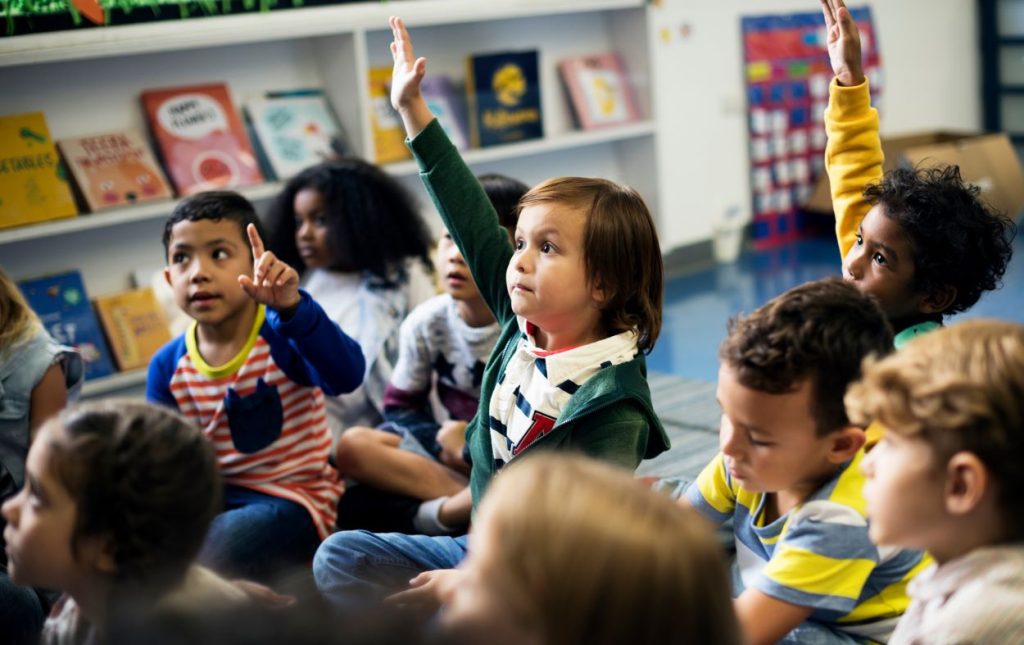Multiple Snohomish County school districts face massive budget cuts entering the 2024-25 school year, including Northshore, Edmonds, Mukilteo, and Marysville. These budget cuts follow a trend of Washington schools struggling to balance their budgets amidst drops in enrollment and the nearing end of Elementary and Secondary School Emergency Relief (ESSER) funds—monies earmarked under the American Rescue Plan.

At the beginning of 2024, Washington had spent over 74% of its allocated ESSER funding, more than any other state. Meanwhile, local districts have begun to slash their budgets.
Northshore School District plans to cut the 2024-25 general fund by $26 million. Edmonds School District plans to cut $10.6 million. Mukilteo plans a further $9.8 million cut after its $24 million reduction last year.
Some districts have resorted to a more drastic solution—closing schools. Marysville School District, currently in a $1.26 million deficit (which they got down from $17.5 million), recently proposed closing three schools in the 2025-26 school year—Cascade Elementary, Liberty Elementary, and Totem Middle School—for an estimated savings of $2,749,811. The Marysville school board will make its final decision on the proposal in March 2025.
“It is far-fetched and disingenuous to say that current budget challenges are due to anything other than a volatile financial landscape impacting schools and school districts across the state and nation,” said Marysville Superintendent Zachary Robbins, who took the position June 1, 2022.
At the start of the 2023-24 school year, Marysville entered into binding conditions with the OSPI when the district was unable to balance the budget.
Why is this happening?
As soon as ESSER funds became available, school districts began to push the money into their General Fund budget, even though ESSER funds were designed to temporarily cover costs associated with COVID-19 learning loss. As schools hired more teachers and added more programs, yearly expenses went up.
In 2017-18, Washington expenditures came to roughly $12,800 per student. This last school year, expenditures reached $18,286 per student. That is a 42% increase over six years.
Schools also saw an uptick in levy funding after the pandemic, as voters seemed to support additional funding to recover learning loss and for capital projects. Those funds were added to the per/student expenditures.
But recently more and more levies have been shot down, and ESSER funding expires September 30. Washington schools have also seen a dramatic drop in enrollment in the last three years. With fewer students enrolled, school districts receive less state funding.
What this means for students
Nearly all local districts are experiencing some form of layoffs. Marysville plans to cut 34 full-time positions this year after having already cut 132 full-time positions in the previous year. The other districts plan dozens of layoffs across all positions, including teachers, administrators, coaches, and paraeducators.
“Due to the fact that 85.5% of our current budget expenditures is staffing, to balance our budget we must eliminate or reduce some positions and programs,” said Northshore Superintendent Michael Tolley.
Layoffs affect the programs a school can offer. The first programs that get reduced in most school districts include sports, band, special education, pre-K, etc.
But more importantly, layoffs lead to larger classes, which will be a major blow to student success. School closures and consolidation will have the same effect.
A famous 1980s Tennessee study found that students in a class of 13 to 17 performed better over time than those in classes of 22 to 25 students. They also found large classes affected minority children more adversely.
In one survey, 90% of teachers agreed that smaller classes can have a “strong” or “very strong” impact on student achievement.
“People talk about ‘silver bullets’ in education, but the only thing that we know works is “small class size,” one teacher told the NEA.
One thing that is unlikely to change is the free lunch programs. House Bill 1238 (HB 1238) requires schools to provide free meals if at least 30% of students are eligible.
That means if students received a free meal last year, they will likely receive a free meal next year. You can see if your school is providing free meals on the OSPI website.
It’s clear what school officials want—more state funding. District leaders do not want to rely on uncertain grants and levies to cover their costs. But Washington state spends more per student than the national average.
In 2022-23, Washington spent $18,286, compared to the national average of $15,633 in the same year. Comparatively, Washington students stand 35th in the nation for SAT scores and 49th for number of students per teacher.
And despite spending going up, students are performing worse each year. In 2022-23, only 39.1% of students hit proficiency, compared to 49.5% in 2017-18. The same trend is occurring in English Language Arts and Science.
Author: Olivia Thiessen










11 Responses
It’s not fair to compare Washington State school expenses per student to the national average. Look at our economy in Snohomish County. Our home values increased much more than the national average. Our taxes, groceries, hourly wages and living costs have increased rapidly. Therefore, our costs per student education would increase as well. It’s not a mater of overspending. Our county has seen the population change to include many, many cultures and languages. This is not an issue most states must incorporate. We’ve also seen a marked increase in students in need of special education. There are so many reasons school districts are suffering with a lack of funds.
But we can put illegal immigrants in luxury hotels and give them free EVERYTHING and our children have to cope with bigger classes and all sorts of budget cuts.
Soooo true. The government puts people who’ve never lived here or contributed one penny to the system before their own people – even veterans🤨. The Democrats are the enablers. Vote for Harris and that’s what your going to get more of🤨.
There can only be so many freebies. All the different cultures and languages need interpreters I think the parents need to pay for that service. Have alittle skin in the game. Teach reading, writing and arithmetic, skills that students will use.
Get away from gender topics, leave that to parents and specialists in gender. Studies etc.
Parents are pulling their children out of public schools in large numbers, because the schools are concentrating on what they feel are not important to their kids future success. They need to put more emphasis on math, reading and science. Less indoctrination on social issues, please. Tax payers want their money spent on things that matter not frills and grandiose facilities.
The teachers go on strike all the time for higher wages and now their salaries are in the 6 figures and they still want more and what is their success rate??? They rank very poorly compared to almost every other state in the nation. It’s because teachers aren’t judged on merit. Seniority doesn’t mean anything as it relates to educating our children. We home schooled our children and they are thriving. The teachers in this state only care about themselves and their leftist agendas!
The problem is not caused by the teachers. Educators can only work with the resources they are given. Basic classes (reading, writing, arithmetic) are taught. Students need more. Sciences, business, economics, trades, arts, sports, physical education, and more are necessary so that students can rise above the national “average”. What about the parents roles in education? Complaining about teacher insufficiencies is a lot easier than accepting the fact that there are way too many parents totally relying on teachers to fulfill all student’s needs. Parents need to be proactive in the education process. Follow up on your child’s work daily. Make sure the child is getting enough sleep, food, and nurturing at home. Make sure your child is not a discipline problem in the classroom. Just be the cooperative parent. Lessoned given to schools will make a big impact on available programs. Larger class sizes will impact how much time a teacher can work with each student. Providing ESL (English as second language) costs more as more specialized teachers are needed ($$$$$).
Washington, with your high cost of living, prioritize money to well rounded education and stop blaming over burdened teachers.
Back when they legalized marijuana in WA state, a huge portion of the taxes collected were supposed to go to the schools. Those taxes along with all the property tax the country collects should be ample for the schools. Money mismanagement ??
Let us please not bash the teachers! They continually are expected to do MORE WITH LESS. Immigrants can and do, literally, get across the border one day and enroll in school the next day, not knowing English. Whole classrooms of kids just sit and wait each time another one enrolls. Porous borders and sanctuary city status and liberal policies are the cause of underperforming schools – not a the teachers.
First, teacher’s salaries are not the cause of the state’s/district’s budget issues, so let’s get off the teacher bashing wagon. Most Washington teachers have multiple degrees, including master’s degrees, and a multitude of specialist certifications. Do you know the salaries of your doctor, lawyer, or the plethora of computer engineers with only a bachelors degree? Costco, Home Depot, and many managers at McDonald’s make more than teachers…without a college degree. Also, teachers who earn six figures are highly educated and certified veterans who have been in the game for 15+ years. My dentist, who holds two degrees and had had only eight years out of dental school earns 1.3 million (as he shared with me while playing racquetball)
No folks, teacher salaries are not the reason for the monetary shortfalls. The PNW is oozing with money given the amount of high tech industry that calls this area home. Ask yourself, where is all the tax money from dope sales, and yes I’m talking to you, the after work gummy and special brownie eaters? Ever been at an intersection where the pot inhalation from other cars is greater than if you smoked yourself. And these unregulated stoners are recklessly driving around town near sidewalks where your children are playing. Where has the tax money gone? Ever hit a pothole on our pristine roads after paying exorbitant registration costs? When did you last ride on one of Washington’s new ferries? Not happening! How many billions, with a fat ‘B’, has the state and local municipalities spent on the homeless, drug intervention, and mental health over the past eight years while still never solving the problem?
Good, hard earned money is being payed into government, but very little is being spent appropriately. The simple fact is that the State is underfunding education, again (think McCleary Act), and school districts are still operating on a “top-heavy” way of doing business. How many “specialist,” “directors,” and deputy superintendents does a district really need for your child to receive a great education? What happens to your child’s education quality with fewer teachers and larger class sizes (30-50 students per class)?
In addition, I agree that since the pandemic test scores and academic proficiency has declined (in most areas of the state/nation), but the dedicated, professional work of teachers is not the cause. When the pandemic hit, it was the teacher (most) who pulled out all the stops, whether remote, hybrid, or on-site to educate your child. Quite a few teachers paid the ultimate cost for doing so. Where were the district and state officials during this period, and what was their contribution to best support your child’s educational needs! Answer? Very little, and in many cases teachers were ghosted, left on their own. And where were the parents…those who gave birth to these children? Most coward at the thought of having to actually “parent” as the world was ending. Post Covid vaccine, parents still neglected to parent, turning instead, on their child’s teacher for their (parents) many parental failures. Districts, and the states, simply recused themselves from culpability, siding with parents as they joined the “Returning to Normal” teacher bashing business. Teachers have been unjustifiably beat up and maimed by both sides. Districts demand the teachers educate with diminished support, and parents desire the school and teachers to proxy-parent for them.
The money is there! Education simply isn’t a priority. Keep the worker bees busy and uninformed, while keeping the pockets of the keepers full.
When they decided all this private School Board, Private School District & under Qualified Teachers The Education System In Every State had a problem. All this Charter Schools, Private this & private that Put all these schools on a very short pay list, in other words you are No Longer Public Education, You Are Private Education Ran By A Bunch of Under Qualified Inadequate Educators. They can Back Step, Soft Peddle It, Make ALL The Excuses they Want But Everyone Is Responsible For The Problem. Like Making Classes Smaller and Expecting more schools to be built which is expensive and then you have the cost of hiring more teachers. Then you got the Problem of Parents putting themselves in charge and in control & Not One of Them Have A Clue About Education, Education Standards, Fiscal Budgets. Then you got these teachers who are not qualified to be teachers got their teaching degree from some online stupid college and then of course let us hire a 24 year old cheerleader to teach 16,17 & 18 year olds because they communicate better with each other and they seem to have a better relationship with that age than someone older. Now you got high school kids dating High School Teachers and School District Employees. Then let’s reduce class size to 13-16 kids per class when the U.S. Federal Law Says That Education Funds Will Not Be Paid For Any Class That Is Less Than 20 Kids and It has To Be A Public Education School & Is Ran By The World Board of Education Laws. No Charter Schools Or Private Schools Will Be Considered Public Education. All The Major Funding For Public Schools Come From A Education Fund That Is A Private Trust That Is Part Of A World Education Fund. Also when Biden Forgave All Those College Loans & That Is Where The College Loan Money Comes From It Seriously Damaged The Education Funding. The government has taken money out of it as loans and never paid it back, the Audit On The World Education Fund Which is A Private Trust That Is Private Owned the Amount of Money Taken Out and Never Paid Back Was Reported to Be In The Hundreds of Trillions of Dollars, The Actual Number was Around 875 Trillion Dollars & of Course There is That Big Argument.